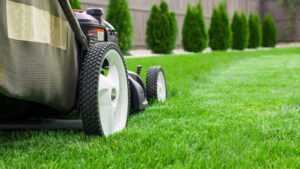Plumbers install and repair pipes and fixtures that supply water, gas, and sewage to residential and commercial buildings. They also work with other building professionals to ensure that plumbing systems meet regulatory standards and codes.

Plumbers often work with dangerous materials and in confined spaces, so they must be familiar with safety protocols and equipment. They also need strong customer service skills to communicate with clients.
Drain cleaning is one of the most important plumbing services that a plumber can offer. Clogged drains and pipes can lead to severe plumbing problems, such as flooding, water damage, and even structural damage to your home. In addition, the microorganisms that grow in clogged drains can cause infections, diseases, and other health complications. Regular drain cleaning by a plumber can help you avoid these problems and keep your family healthy.
A common cause of clogged drains is food scraps and grease that build up in the pipe. To prevent this, you can install a drain cover in your kitchen sink or put a strainer on your bathroom sink to catch food and other waste. You can also use a chemical drain cleaner to dissolve the buildup. However, it is best to hire a plumber for this job as it can be dangerous if done incorrectly.
Another common reason for clogged drains is a blockage in the sewer line. This can be caused by tree roots that infiltrate the line or broken pipes. To prevent this, you can have your plumber hydro jet the lines and use a video inspection to assess the condition of your plumbing system.
Clogged drains can be very frustrating and can interfere with your daily life. A plumber can clean the drains and pipes quickly and effectively to restore your plumbing to normal. They can also prevent the clog from occurring again in the future.
Having your drains cleaned regularly can result in a faster flow of water and can also save you money on costly repairs later on. Regular cleaning can also prevent foul odors from building up in your home. If you notice that your drains are slowing down or making strange noises, call a plumber right away to prevent the problem from getting worse.
You can do some of the drain cleaning yourself by pouring boiling hot water down the drain. This can melt and disperse the grease that has built up in your pipes. You can also buy drain cleaning products that are safe for your pipes at the hardware store. However, it is best to call a plumber for this job as they can use professional tools to remove the clog without damaging your pipes.
Drain snaking
Many homeowners are tempted to use a drain snake when they have a severe clog. However, it’s a job best left to professional plumbers. Attempting to snake a drain yourself can lead to bigger problems, such as broken pipes or even worse clogs. A professional-grade drain snake has the strength to break up and remove stubborn blockages without causing damage to your pipes or drain system. A plumber will also know how to use the tool correctly, avoiding costly mistakes.
A drain snake is a long, slender metal auger that can be pushed down a sink or tub drain to dislodge a blockage. It’s a versatile tool that can reach obstructions up to 50 feet down your pipe lines. It’s also much less expensive than other methods of drain cleaning, such as hydro-jetting. However, it’s important to note that it’s not as efficient for larger or more severe clogs.
To begin snaking a drain, you should start by removing the drain cover and possibly the p-trap (the curved piping under the sink). This will give the snake more space to work and may allow you to locate the clog in the p-trap itself. Once you’ve done this, insert the snake and slowly feed it down the pipe. Once you feel resistance, you can begin twisting the cable to break up and remove the clog.
It’s important to use the snake gently to avoid damaging the lining of your pipes. Exerting excessive force can cause the snake to coil back on itself or even break your pipes. It’s also a good idea to wear rubber gloves and goggles when using the snake, especially if you’ve poured chemical drain cleaner down the pipe.
Once you’ve reached the clog, use your snake to hook it and pull it toward you. You may need to repeat this process several times before the clog is fully removed. Once you’re confident that the clog has been cleared, carefully retract the snake and test the drain with water to make sure it works. It’s important to use a snake that is compatible with your pipes, such as a plastic or metal snake.
Sewer cleaning
A sewer line is a crucial part of the plumbing system in homes and businesses. It carries waste to a treatment plant or septic tank, and it also provides drainage for toilets and other drain lines. It is important to keep up with routine sewer cleaning to prevent clogs and other problems. A professional plumber can use a variety of methods to clean a sewer line, including mechanical cleaning and hydraulic cleaning.
The first step in a sewer cleaning process is to examine the condition of the pipe. Professional plumbers can use CCTV cameras to view the inside of the pipes and determine the best course of action. They may recommend a specific cleaning method depending on the condition of the pipe and the type of blockage.
Once the pipes are clear, the plumber can restore normal water flow. This will eliminate odors and stop wastewater from backing up into sinks and other areas of the home. It will also reduce the risk of damage to the property and health issues for those who live in the home or business.
Regular sewer cleaning can also help to prevent costly repairs and maintenance. A well-maintained sewer line can increase the lifespan of the pipes and reduce the risk of blockages. It can also reduce the amount of waste that is sent to the septic tank or treatment plant.
Some common signs that it is time for a sewer cleaning include water pooling around drains, slow-flowing toilets, and foul odors. If you notice these issues, call a plumber right away for inspection and cleaning.
While store-bought drain cleaners can sometimes help remove small clogs, they will not work on more serious blockages. In addition, they can cause damage to the pipes. Professional plumbers have the equipment and skills to clean even the most stubborn clogs without damaging the pipes.
Mechanical cleaning is a process that uses hand rods and power rodders to remove debris from the pipes. It is especially effective for large blocks of debris such as gravel, sand, or roots. Another popular method is hydraulic cleaning, which uses high-pressure water to clean the pipes. This method involves inserting a nozzle at the access point closest to the blockage and then pushing out the debris with water pressure.
Drain repair
Plumbers fix and maintain drains, piping, toilets, faucets, appliances, and fixtures. They use a variety of tools to do their jobs, including augers and snakes. They also inspect plumbing systems to ensure they are functioning correctly. They may also install and repair gas lines in homes and commercial buildings. Plumbers often work with blueprints and building codes to determine the proper placement of piping, fixtures, and appliances.
Clogged drains are a common plumbing problem. They can be caused by hair, soap scum, toothpaste, skin lotions, oils, and cooking grease. If the problem isn’t addressed, the clogged drain can cause flooding, water leaks, and expensive repairs.
If you have a clogged drain, try using a plunger. If this doesn’t work, you can try a chemical drain opener. Be cautious when using these products, however, as they can damage some pipes and drains. If the clog is severe, you may need to remove the trap and drain cover.
A professional plumber can assess your clogged drains and pipes and recommend the best course of action. They can use a camera to inspect the inside of your pipes. This allows them to see any blockages or damage and makes it easier to locate the source of the problem. If the pipe is damaged, a plumber can use a drain-and-trap auger to break up and remove the clog.
In addition to repairing drains, a plumber can also install new ones. They can replace old, corroded, or broken pipes. They can even replace entire sections of a pipe if necessary. They can also install new faucets, toilets, shower heads, and other fixtures.
A faulty sewer system can lead to problems throughout your home or business. If you notice sewage backing up into your property, it’s important to call a plumber immediately. Sewage contains dangerous bacteria that can cause illness and even death if not cleaned up properly. A plumber can clean the sewage and restore your plumbing system to normal.
Plumbers can also help prevent drain and pipe problems by performing regular maintenance. This includes keeping drains and garbage disposals clear of food scraps and other debris. They can also install a backflow prevention valve on the main sewer line to prevent backflow and protect your home or business from contaminated water.








